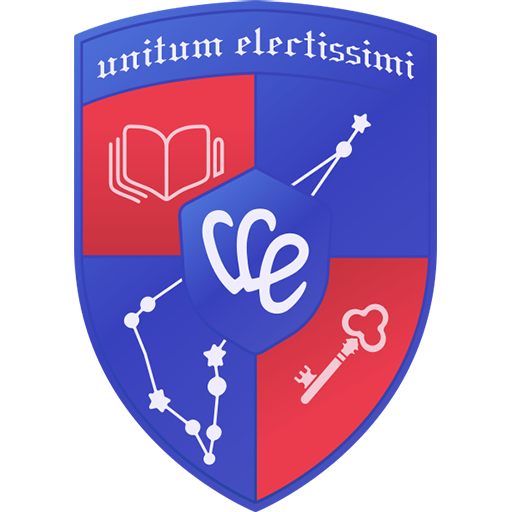2025 ESAT Post-Exam Analysis: The Data-Driven Proof Behind “It Felt Like a UEIE Mock”

Independent Teacher
2025 ESAT Post-Exam Analysis: The Data-Driven Proof Behind “It Felt Like a UEIE Mock”
The October 2025 ESAT is all done and dusted. We’ve been hearing all sorts of things from students, but beyond the usual ‘Maths was a nightmare’ and ‘The sciences were a breeze’, pretty much every UEIE student was saying the same thing: ‘Honestly, it felt just like doing one of our mocks!’
And that’s no fluke. It’s what happens when your predictions are spot-on and you’ve got a platform that’s a 99% match for the real deal. So, what I’m going to do now is a proper deep-dive into the 2025 ESAT, using all the feedback we got straight from our students and our own exclusive mock data. I’ll break down exactly what was on the paper, how we saw it coming, and what you should be doing next.
I. The October 2025 ESAT: The Lowdown on What Changed (and What Didn't)
Compared to the first-ever ESAT, this year’s paper felt a lot more… established. The overall structure was the same, but they’ve clearly had a good tinker with the difficulty levels and are getting much fussier about the exact skills they want to see from candidates. After having a proper chat with dozens of our students, we’ve sussed out a few key changes:
1. Trend One: Maths 1 has become the new 'separator'.
This year, Maths 1 was miles harder. It wasn’t just about ticking off syllabus points anymore; it was a proper grilling of your abstract thinking, how you build a logical argument, and your raw calculation skills. What’s behind this? Simple: the G5 unis are putting up a massive ‘hard filter’ for applicants. They’re making it crystal clear they only want students who can really think mathematically. This was a massive headache for anyone applying for stuff like Biology or Chemistry, but frankly an advantage for the Physics and Engineering hopefuls with solid maths foundations.
2. Trend Two: The sciences went back to basics. It was about efficiency, not difficulty.
The Physics, Chemistry, and Biology questions looked deceptively simple. But really, they were a sharp test of whether you actually grasped the ‘first principles’. The examiners basically stripped out all the horrible, fiddly calculations to see if you had a gut feeling for the core concepts and could knock up a correct physical or chemical model in no time.
3. Trend Three: 'Trap questions' are here to stay. Being meticulous is non-negotiable.
Another huge feature this year was the spike in ‘easy-to-mess-up’ questions. They set little traps all over the place – in the boundary conditions, sneaky unit conversions, or just really subtle wording in the options. This wasn’t just testing what you know, but how obsessively you read the question and how disciplined you are. That’s pretty much the number one rule for any top-level research, to be fair.
4. Trend Four: The hidden 'race against time' is a test of execution under pressure.
At its heart, the entire exam was just one long, high-intensity pressure test. It’s not enough to ‘know’ the answer; you have to find it ‘fast’ and get it ‘right’. This double-whammy of testing your processing speed and your nerve is just a normal day at the office when you’re studying or researching STEM at a top level. The ESAT is just making you prove you can handle it before you even get in.
II. From Nailing the Prediction to Proving It in the Exam: How Our Mocks Were a Dead Ringer for the Real Thing
The assessment trends analysed above were a challenge for the average candidate, but for UEIE students, they were familiar scenarios rehearsed repeatedly in mock training.
The feedback we kept hearing again and again—”It literally felt like I was just doing another UEIE mock”—wasn’t a fluke. It just proves our whole philosophy is right: prep isn’t about blindly hammering through a massive question bank. It’s about a high-fidelity simulation of the actual exam, all based on data analysis. Here’s a bit of what our students told us, showing just how closely our training lined up with the real thing.
1. We absolutely nailed the core problem-solving methods
Our main goal with the mocks isn’t to ‘spot’ an exact question. It’s to perfectly replicate the types of models and logical steps the examiners love to use. After the exam, loads of students told us that many of the nasty-looking calculations in Maths 1 and 2 could actually be sidestepped with clever tricks – and the core methods for doing that were identical to what we’d hammered home in our final sprint mocks.
2. We simulated the exam environment and pressure perfectly
Proper prep has to include simulating the environment and the ‘pressure’. We design our mocks to be an exact match for the real thing: same number of questions, same difficulty curve, and a 99% identical exam setup (right down to the interface and timers). The whole point is to train your brain to keep working under pressure and manage your time. And it worked. Students told us that because they were so used to the intensity of our mocks, when they got into the real exam, they just stayed calm and stuck to the plan.
3. We strategically covered the obscure, low-frequency topics
The fight for the top marks always comes down to who’s mastered the obscure, easily-forgotten topics. Our teaching system scans the entire knowledge map and uses data analysis to pinpoint those ‘game-changer’ topics—the ones that rarely come up but are a massive differentiator when they do. This year, a few students got hit with random questions on things like stretching y in an equation, 180° function rotation about an arbitrary point, Young’s Modulus, the density of water between 0-4°C, and vacuum refraction in glass… and every single one was stuff we had strategically covered in our pre-exam intensive training.
III. From 'Gut Feeling' to Hard Science: Proving It with Our Mock Exam Data
If student feedback provides qualitative observation, then our back-end mock exam data provides rigorous, visual, quantitative validation.
Here’s why the UEIE prep system is so ridiculously effective: it’s all driven by two main engines. Think of it as a macro-level ‘group evolution’ and a micro-level ‘individual diagnostic. This setup makes sure that every ounce of effort a student puts in goes exactly where it’ll make the biggest difference.
1. The 'Macro' View: Watching the Entire Cohort Level Up
Getting a good ESAT score isn’t just about a few star pupils winning; it’s about lifting the entire group. Our ESAT Score Distribution Graph (check it out below) shows this in black and white.
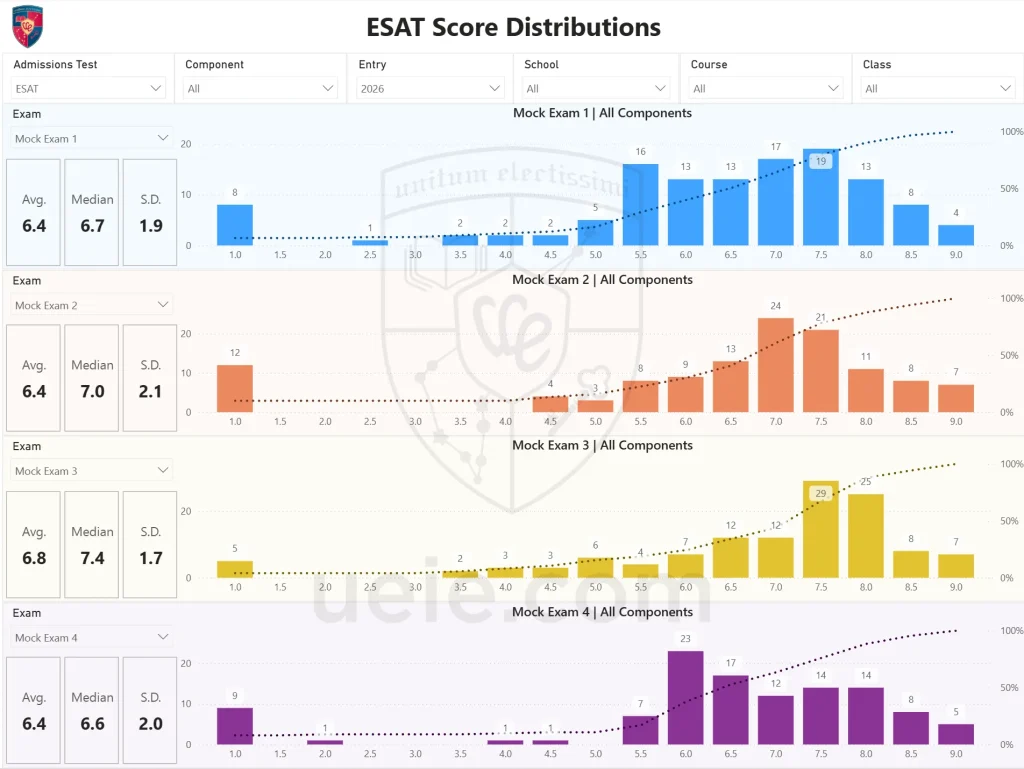
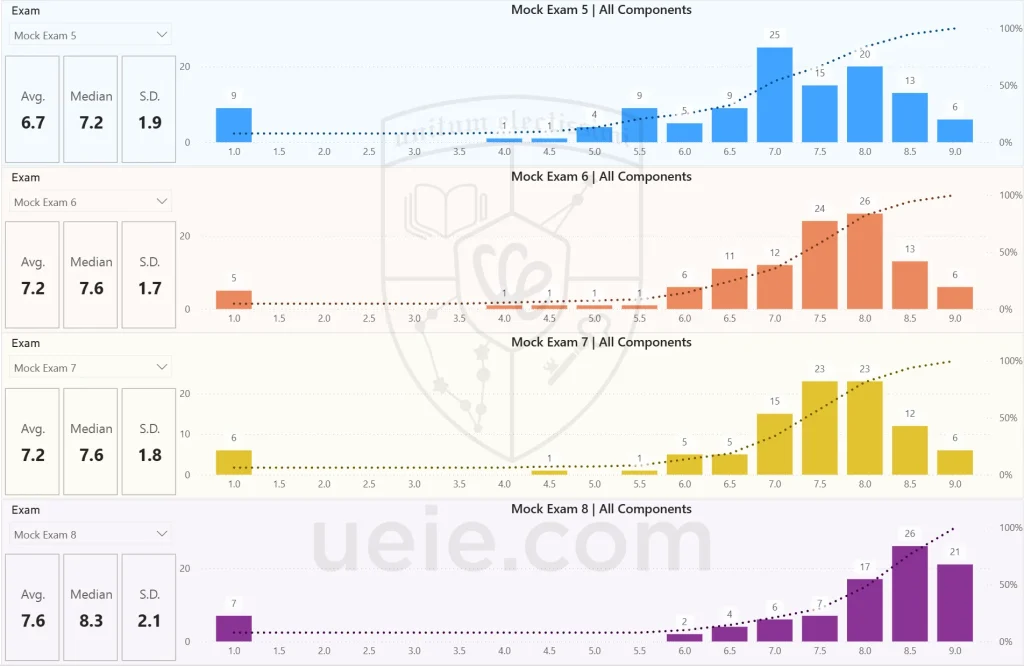
(Mocks 1-8, Sept-Oct 2025)
Just look at the journey from Mock 1 to Mock 8. You can clearly see:
- The whole pack kept moving up: The average (median) score for our students started at a decent 6.7 and steadily climbed to a seriously strong 8.3 by the end.
- The top-scorer bracket just exploded: On that last mock—the one we made the toughest to be just like the real thing—pretty much everyone was clustered in that top 8.0-9.0 range.
This is the proof that out training system works. It is systematically pulls up the baseline for everyone and gets the whole cohort sitting comfortably in the G5 admissions zone. We’re not just relying one a few geniuses to make us look good.
2. The 'Micro' Diagnostic: Plotting a Unique Growth Path for Every Student
The whole group gets better because each individual gets better. Our Student Personal Report system basically plots a unique journey for every single student. It’s like ‘surgical precision’ for finding and fixing weaknesses.
Here are two classic examples of how it works.
A Textbook Case of 'Excellence and Stability'
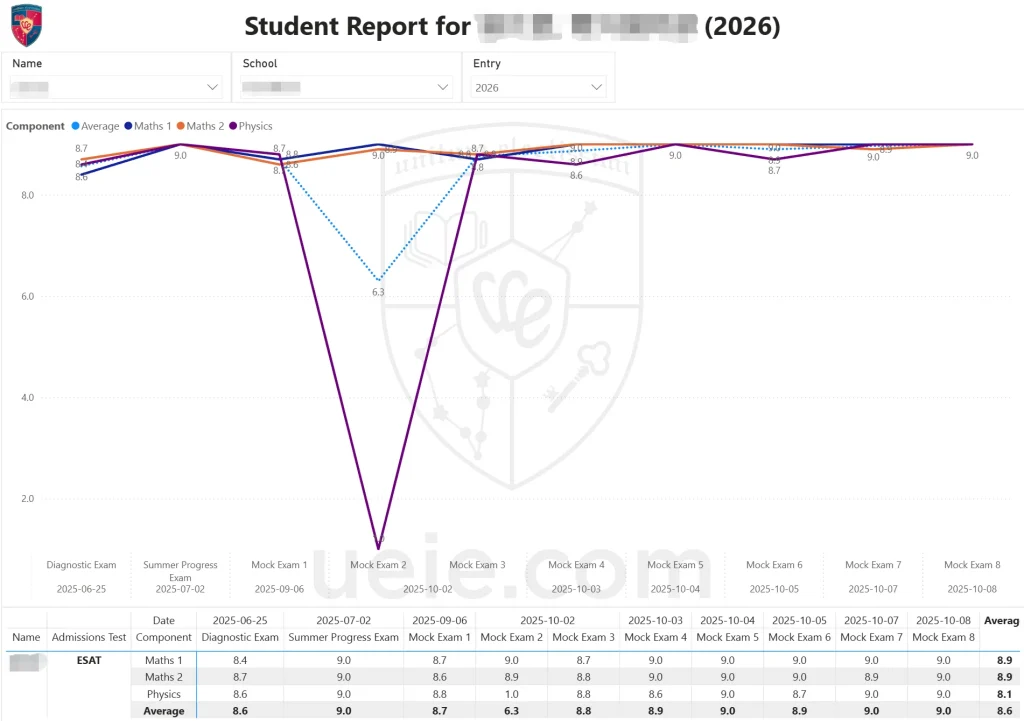
(Studying from June - Oct 2025)
This student’s score line was basically flat… right near the top. They barely dropped a mark. This just proves their knowledge was already rock-solid. For them, our mocks were the perfect way to stay sharp and plug any tiny, lingering gaps. That kind of consistency under pressure is what raw talent looks like, and it shows the absolute peak our students can hit.
The Perfect Example of 'Value Added'
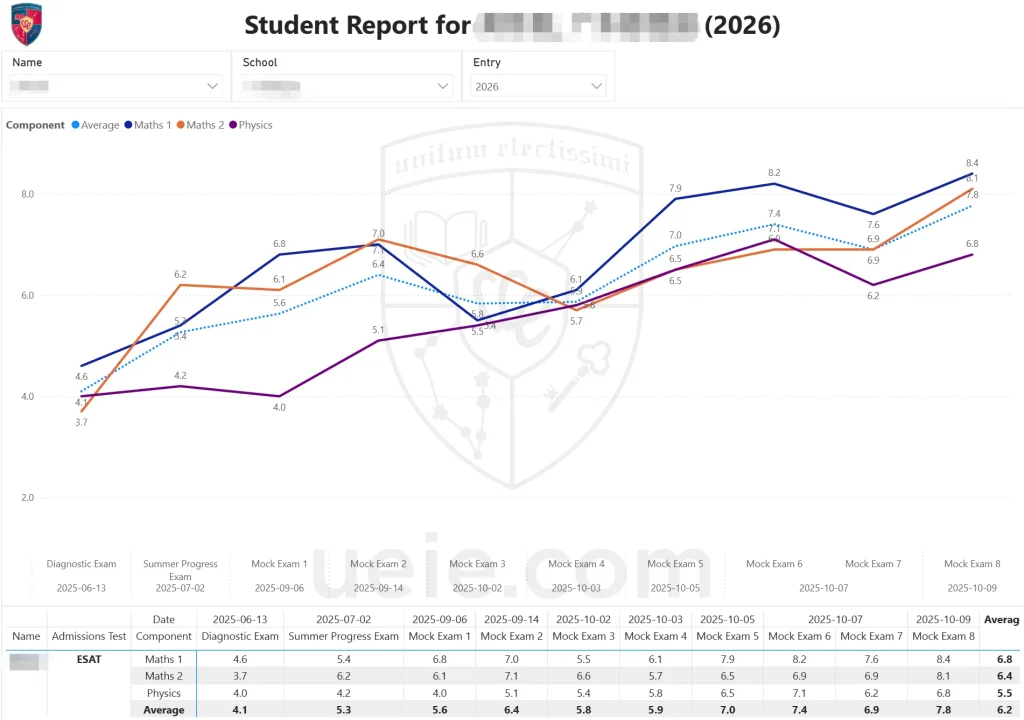
This student started out at a 4.1 average. By sticking with the eight mocks, getting constant feedback, and doing the targeted training, they finished on a 7.8. That steep upward curve is the best proof you’ll ever see that the hard graft can be measured, and that you can literally watch yourself improve.
IV. The Endgame: From a Top Score to Nailing the Interview
Right, let’s be clear: a brilliant ESAT score isn’t a golden ticket. It just gets you a seat at the table for the final round.
The exam and the interview are testing two completely different skill sets. The exam is all about whether you can find the ‘right answer’ inside a fixed set of rules. The interview—especially for big-hitters like Oxbridge and Imperial—is about finding out if you can build an argument when you’re in totally unknown territory. The interviewers aren’t looking for a perfectly trained ‘problem-solving robot’. They want to find a future colleague—someone who can think straight under pressure, shows massive academic curiosity, and has a rigorously logical mind.
And guess what? We’ve taken the exact same hardcore, systematic approach we used to deconstruct the ESAT exam, and we’ve applied it to deconstructing the interview.
That’s why UEIE is officially launching our interview coaching programme. Our goal is dead simple: to take the massive advantage you built for the written exam and turn it into an unshakeable, winning performance in that interview room.
We’ve built the whole thing around three core modules:
1. 1-to-1, High-Fidelity Mock Interviews
These are led by tutors with serious, senior-level interview experience from Oxbridge and Imperial. We perfectly replicate the pressure and academic depth of the real thing, giving you proper, hands-on combat practice.
2. Logical Framework & Verbal Expression Training
We don’t feed you ‘model answers’. We train you how to build and communicate your thought process, clearly, even when you’re under the cosh. This is the toolkit that will let you handle any curveball question they throw at you with total confidence.
3. Pushing Your Horizons to the Academic Frontier
We’ll get you discussing cutting-edge topics that go way beyond the A-Level syllabus. This is all about helping you build your own unique academic perspective, so you can walk in there and show them you’ve got real passion and huge potential for the subject.
Act Now
To guarantee the highest quality of coaching, our interview preparation places are strictly limited and available only to students who have previously purchased UEIE courses or study materials. Past experience shows that these places are typically booked up in a very short time.
Follow Us on Wechat

